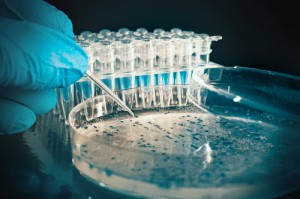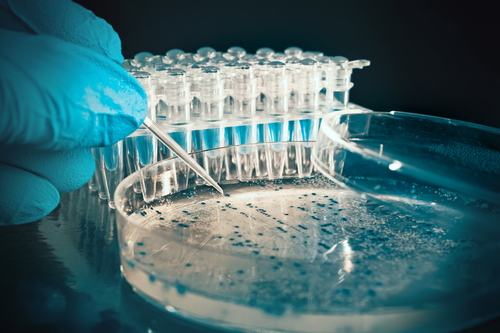 A novel study on the use of engineered E. coli bacteria as a “genomic tape recorder” for cellular memories, entitled “Genomically encoded analog memory with precise in vivo DNA writing in living cell populations” was published in Science by Fahim Farzadfard, part of Dr. Timothy K. Lu’s group from the Synthetic Biology Center at MIT. The engineer’s research team transformed the genome of the bacterium E. coli into a storage device for long-term memory. The authors hypothesize that this stable, erasable, and easy-to-retrieve memory may be adequate for applications such as biosensors for environmental and biomedical applications.
A novel study on the use of engineered E. coli bacteria as a “genomic tape recorder” for cellular memories, entitled “Genomically encoded analog memory with precise in vivo DNA writing in living cell populations” was published in Science by Fahim Farzadfard, part of Dr. Timothy K. Lu’s group from the Synthetic Biology Center at MIT. The engineer’s research team transformed the genome of the bacterium E. coli into a storage device for long-term memory. The authors hypothesize that this stable, erasable, and easy-to-retrieve memory may be adequate for applications such as biosensors for environmental and biomedical applications.
“You can store very long-term information,” said Timothy Lu, the associate professor of electrical engineering and computer science and biological engineering and senior author of the paper, in the press release. “You could imagine having this system in a bacterium that lives in your gut, or environmental bacteria. You could put this out for days or months, and then come back later and see what happened at a quantitative level.” added Dr. Lu.
The researchers programmed the E. coli bacteria to store memory by expressing a recombinase enzyme, which can insert DNA, or a specific sequence of single-stranded DNA, into a specific site. After the DNA is produced, but only when the recombinase enzyme is activated by the presence of a predetermined molecule or stimuli, such as light, the enzymes inserts the DNA in the cell’s genome at the specific site. When an exposure is recorded, which is done through this process, the memory is stored for the lifespan of the bacterial population and is transferred between generations.
“We can target it anywhere in the genome, which is why we’re viewing it as a tape recorder, because you can direct where that signal is written,” said Dr. Lu.
There are many ways to recover the stored information, such as by sequencing the genomic DNA if the DNA was inserted in a non-functional genomic region. The researcher also suggest that data could be retried by evaluating the survival rate of the cells if the new DNA sequence was inserted near an antibiotic resistance gene and would be expressed when antibiotics are added to the cells. This last approach was the one used by the researchers in the lab.
In this study, the authors used a system to detect light, a lactose metabolite named IPTG, as an inducer of β-galactosidase activity in many bacteria, and an antibiotic derivative called aTc. This strategy could have been designed for many other molecules or even signals produced by the cell, said Dr. Lu. The researchers could determine how much exposure the bacteria had and for how long just by measuring the percentage of cells in the population that has the new DNA sequence.
“This work is very exciting because it integrates many useful capabilities in a single system: long-lasting, analog, distributed genomic storage with a variety of readout options,” said Shawn Douglas, an assistant professor at the University of California at San Diego, not involved in the study. “Rather than treating each individual cell as a digital storage device, Farzadfard and Lu treat an entire population of cells as an analog ‘hard drive,’ greatly increasing the total amount of information that can be stored and retrieved.”
“Because there are billions and billions of bacteria in a given test tube, and now we can start leveraging more of that population for memory storage and for computing, it might be interesting to do highly parallelize computing. It might be slow, but it could also be energy-efficient,” said Dr. Lu.
There are many potential applications for this type of sensor, such as monitoring the levels of carbon dioxide, acidity, or pollutants in the ocean. Biomedical applications could include engineering the bacteria to live inside the human digestive tract to monitor dietary intake or to detect inflammation in various metabolic and inflammatory diseases; or engineering animal or human brain cells, grown in a petri dish, to track if a certain disease marker is expressed or a neuron is active at a given time.
“If you could turn the DNA inside a cell into a little memory device on its own and then link that to something you care about, you can write that information and then later extract it,” said Dr. Lu.
This research was funded by the National Institutes of Health, the Office of Naval Research, and the Defense Advanced Research Projects Agency.

